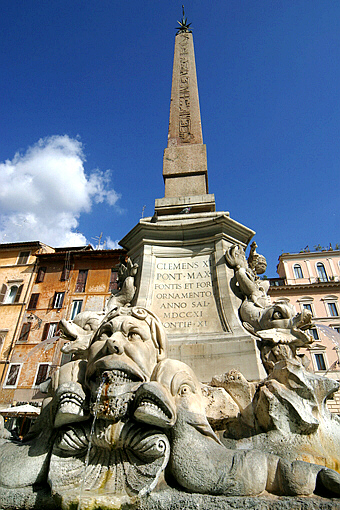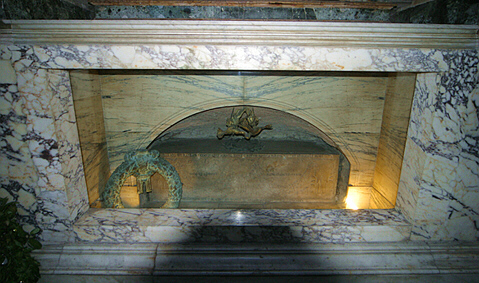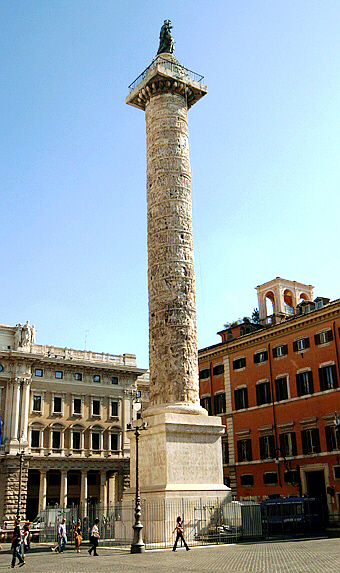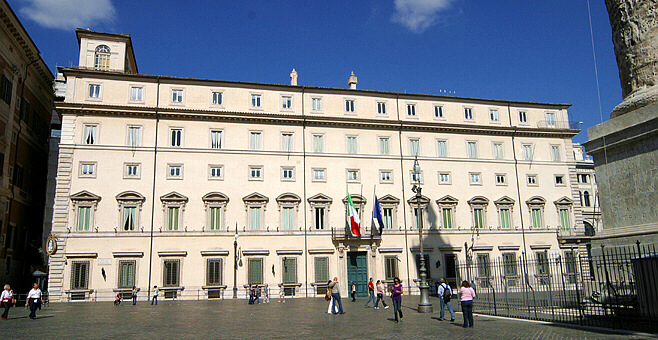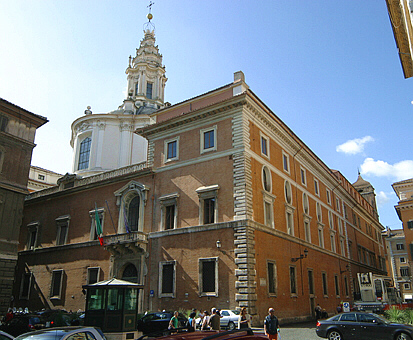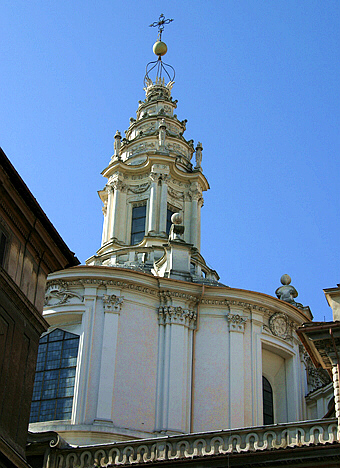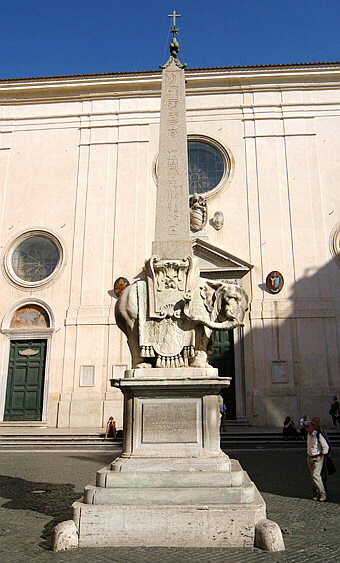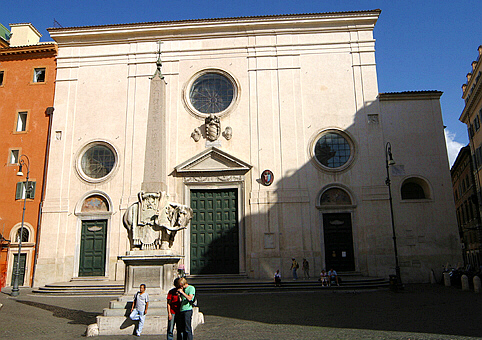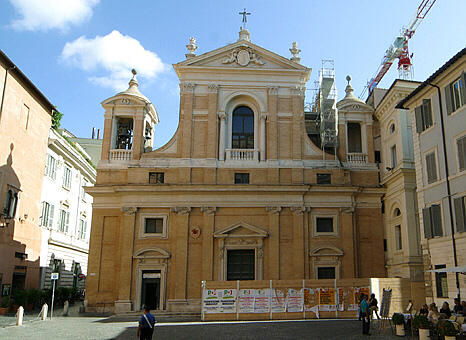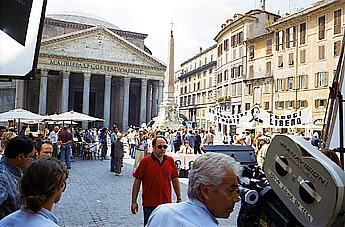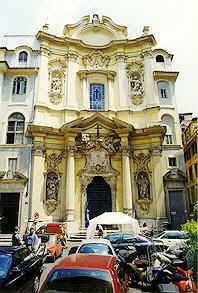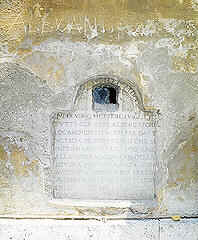| |
| |
Pantheon quarter
The area is one of Rome's most ancient, between Piazza Venezia,
the Pantheon and Piazza Navona. The housing was built especially beginning
from Renaissance on top of outstanding ancient Roman monuments.
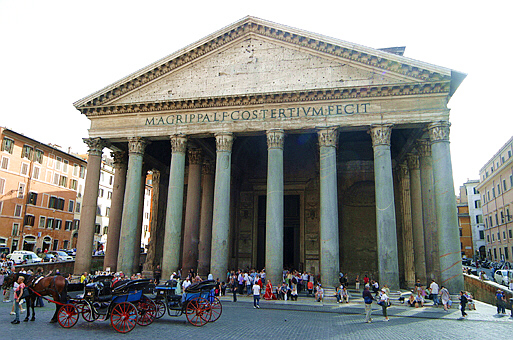 |
The Pantheon, seen from Piazza della Rotonda |
The Pantheon is the best preserved monument of antiquity. It is
also the most ancient monument in the world that maintained its original
function: a religious temple (first pagan and then Christian). It was built by M. Agrippa and by emperor Hadrian in an area with military headquarters (Campo Marzio) in the early years of the second century.
The temple has Rome's largest dome (larger than S. Peter's: 43.30 Mts., IE 144.33 Ft.!). An engineering marvel of ancient Romans, the best preserved ancient Rome temple was transformed into a Christian church, and later into a national monument hosting the tombs of Raphael as well as of the former Italian Royal dinasty. |
|
APARTMENTS FOR RENT IN THIS AREA
"THE TURTLES' DREAM": wonderful four bedroom three bathrooms, amazing sitting room, separate large dining room / kitchen, terrace in historical palace facing the Turtle Fountain. Elevator. New! Highly recommended.
"SIGNORA TOWN HOUSE": Finest two bedroom town house, with sitting room-dining room, large terrace, kitchen, in an elegant historical palace near Piazza Navona and the antiquary street Via Coronari. Excellent fittings and equipment.
Nearby:
"LEONARDO" (Via della Croce), a three bedroom, sitting room, 2 bathrooms, terrace apartment in an 18th century palazzo (2-7 persons).
"CARAVAGGIO", an elegant designer one bedroom apartment, tastefully and skillfully prepared and remarkably equipped (up to 4 persons).
"BOTTICELLI": elegant 2 double bedroom, sitting room, dining room 2 bathroom apt., with patio and fireplace (4-5 persons). Elevator. POSSIBLY RENTED WITH THE ADJOINING "CARAVAGGIO" (together they form a 3 bedroom 3 bathroom apt.).
"ROME DOMES": Fine 2 bedrooms 2 bathr. attic, with sitting room, dining room, large open plan kitchen, with 2 utmost panoramic terraces with views of Rome's domes, in an elegant historical palace facing the famous Tortoise fountain. Daily cleaning (4-5 persons). Elevator.
|
|
|
| |
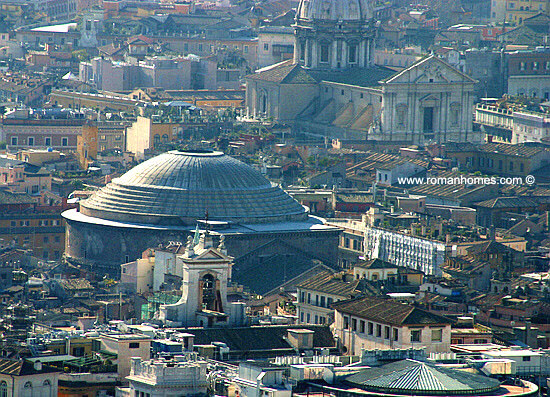
|
The dome is a one-cast concrete block, made lighter by the use of coffered cealings, and by a large (9 Mts., 30 Ft.) circular opening at the top, called "oculus" (eye), which you can clearly single out in the left photo.
Left photo: the Pantheon dome, aerial view from a hot air baloon (montgolfier). In the foreground you can see the bell turret and the semi-circular roof of Palazzo Montecitorio (seat of the Italian Parliament), and in the background the Church Sant'Andrea della Valle.
This area is highly central, and within a walking distance of 500 metres (550 yards) you find: the Trevi Fountain, the Spanish Steps, Piazza Navona, Campo de' Fiori, IE practically all Rome's central sights.
|
| |
In the lower panoramic photo you can see the Pantheon's dome seen from an opposite perspective. The picture was taken from the roof of Palazzo Altieri, near Capitol Hill and Piazza Venezia. |
|
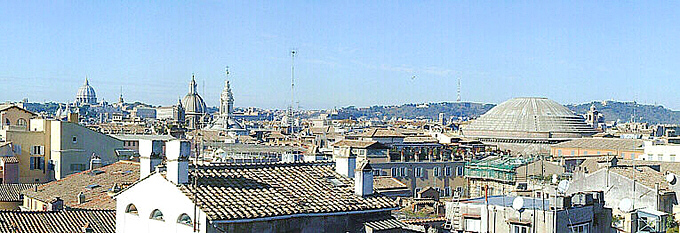 |
The Pantheon's dome standing out in Rome's skyline. The other notable domes you can see are (from right to left): the shell-like dome of St. Ivo alla Sapienza (designed by Francesco Borromini, still in the Pantheon quarter), and more distant, the dome of St. Agnese in Piazza Navona, and finally St. Peter's dome, 136 Mts. or 453 Ft. high (yet still not as large as the Pantheon's!).
CLICK HERE TO SEE THE NATURAL PANORAMIC VIEW OF THE PANTHEON AREA!
|
|
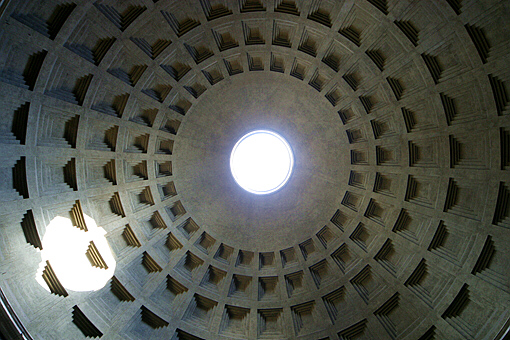
In the left photo you can see the fountain standing in front of the Pantheon, surmounted by a small Egyptian obelisk.
The top photo shows the coffered ceiling of the Pantheon, an ancient Roman invention to make the dome lighter, and also the "Oculus" (eye), the circular opening 9 meters wide, still to make the vault lighter, preventing it to collapse. The Oculus allows light but also rain to enter. The water is collected in a drainage placed exactly at the centre of the marble floor.
|
The photos below show other aspects of the interior of the Panthron.
|
The top photo shows Raphael's tomb. His full Italian name was Raffaello Sanzio da Urbino.
The right photo shows instead the tomb of King Victor Emmanuel II (Re Vittorio Emanuele II), the monarch who reunited Italy in 1861 AD with a number of wars of annexations, after nearly 1,500 years of separation of Italy into a number of smaller states. He was thus defined "Padre della Patria" (Father of the Fatherland). He was also dubbed the "Re Soldato", or Soldier King. |
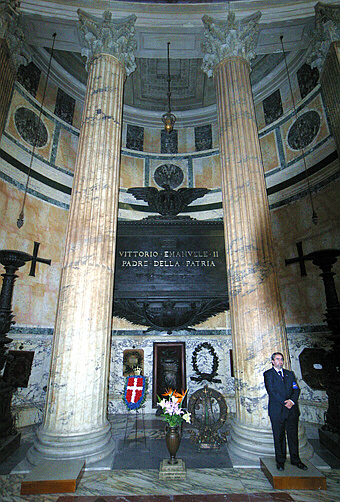 |
Around the Pantheon you find imposing, elegant, and important monuments.
The entire area was and is still called "Campo Marzio" in ancient Rome, as it was an area with military facilities. It is also called "Foro Boario", as there used to exist a Forum with this name.
Near the Pantheon in particular you find sumptuous palaces, with important institutional functions, and also noteworthy monuments.
Palazzo Montecitorio (right photo) is an elegant and awesome 17th century
palace, seat of the Italian Parliament. In front you can see one
of the obelisks of ancient Rome.
|
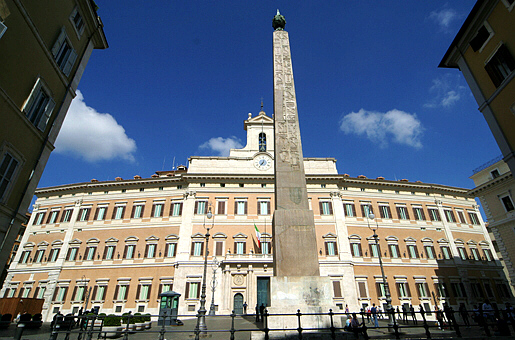
|
As you walk toward the Spanish Steps, immediately after you step in a large, most scenic square, Piazza Colonna.
| |
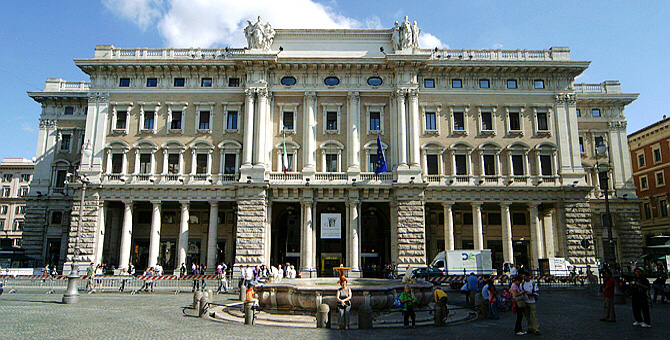
|
|
The elegant square takes its name from the famous column of Marcus Aurelius.
The Palazzo Colonna, taking its name from the column, was also the town palace of the patrician family Colonna (where from many Popes originated).
It is endowed with outstanding decorations and paintings in each room.
|
|
In the foreground of the Piazza you find the ancient Roman column
dedicated to the Roman emperor Marcus Aurelius (3rd century AD).
It celebrates the victory of the emperor against
three ancient Germanic populations (Quadi, Marks and Sarmatians).
The statue of the emperor was replaced with the one of St. Paul in 1589 AD.
The column is 42 meters high, and if unwind the spiral with the decorations would be more than 100 meters long (110 yards).
The bas relief displays and narrate the wars of the emperor with the three Germanic populations: they are fought, subdued, and finally forgiven, making them loyal allies of Rome.
|
In the square you find also Palazzo Chigi (right photo), another wonderful
16th century palace, which is the seat of the Italian Prime
Minister. |
|
|
There also a few important churches in the area. The most notable is probably the Church and the compound of St. Ivo alla Sapienza (top photo).
The entire building is ornated with the coat of arms of the Barberini family (three bees, symbolozing the operosity of the family), from which several popes originated.
The complex, the internal court, and the dome are work of Rome's probably most brilliant architect, Francesco Borromini. In the right photo you can see his genial shell-like dome, to symbolize the harmony and perfection of nature. |
|
Another famous church is Santa Maria in Minerva.
| |
|
The top photo displays the facade of the Church
of Santa Maria in Minerva, where the body of St. Catherine of Siena
rests (her head rests in Siena, where she was born).
In front of the church you can see the Elephant statue, by the famous
sculptor and architect Gian Lorenzo Bernini. |
|
Another important church is Santa Maria in Aquiro (right photo).
It is situated in a quiet, seemingly secluded square. |
|
THE PANTHEON NEIGHBORHOOD
|
|
We decided one day to tour around the quarter and snap some photos to let you have an idea of its feel.
When we got there, we found out that
they were shooting a film with the famous actor Carlo Verdone,
shown in the foreground of the left picture (he's the one with
the red T-shirt).
Rome is such a kaleidoscopic town that
you might find something (or somebody) suddenly takin all your attention!
(Left): Pantheon - film shooting
|
|
| |
In the next photos you can see the church of St. Maria Maddalena
al Campo Marzio (left) - a baroque jewel -, and two "Signori"
(gentlemen) happily tasting their "gelato" (ice cream) as they exit
"Giolitti", perhaps the most renowned classical "gelateria"
or ice cream parlour in Rome ("an institution" as Romans say, meaning that
it is and old shop appreciated by the population). |
|
| |
|
|
| |
|
In front of the church (left) there were supporters asking signatures for a referendum (under the white tent). Social activities are very popular in Italy. |
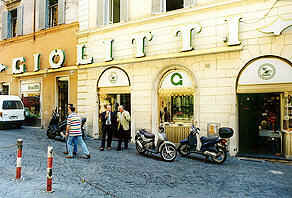
"Giolitti" ice cream parlor or "gelateria", one of the "institutions" of Rome about caffe' (coffee) and gelato (ice cream). Visit the page with a complete presentation of Rome cafes and ice cream parlours.
|
|
| |
Church of Santa Maria Maddalena |
|
|
|
| |
|
|
|
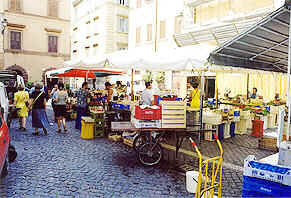
|
The Piazza delle Coppelle morning market is very characteristic (and
useful). Adjacent to it you can see the former Church State authority
document box. In an a very adorned 17th century Italian it informs
hotel and pensione owners that they should put in the box the identification
details of their guests.
Left: Piazza delle Coppelle morning market
Right: Former Church State authority document
box |
|
| |
One last word about public transport: the quarter is right in the
centre of Rome, and you can walk to most places. Yet if you want
to use public transport, it is very efficient in the streets
around the quarter (electric buses 115 and 116 in the little streets, bus 62 and 64
in the large streets like Corso Vittorio Emanuele II).
|
|

To visit the other quarters or sights, please go:
|

Visit Rome | Rome panoramic views | Rome apartments and villas | Inquire | Rome travel guide | Rome map | Service | Resources
Roman Homes homepage |
|
|




